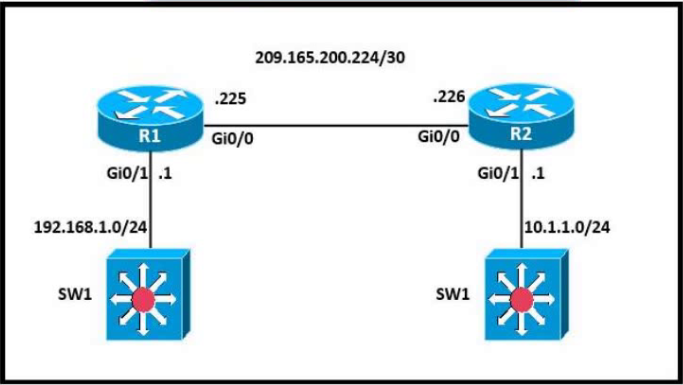


Refer to the exhibit. A network engineer is in the process of establishing IP connectivity between two sites. Routers R1 and R2 are partially configured with IP addressing. Both routers have the ability to access devices on their respective LANs. Which command set configures the IP connectivity between devices located on both LANs in each site?
SVN05
Highly Voted 3 years, 2 months agoMarkFromMilan
Most Recent 8 months, 1 week agoananinamia
1 year, 11 months agoShanku97
1 year, 11 months agoJorro99404
2 years, 2 months agoiMo7ed
2 years, 5 months agoDoBronx
2 years, 9 months agoGigaGremlin
2 years, 10 months agoShehuUsman
2 years, 12 months agoSutokuto
2 years, 10 months agoCustomexit
2 years, 9 months ago